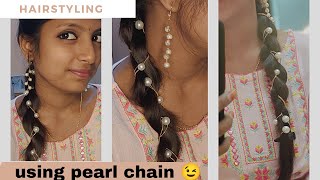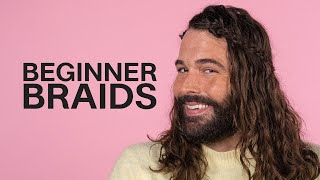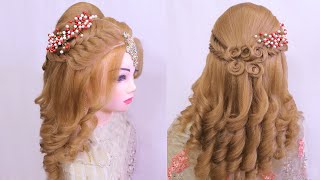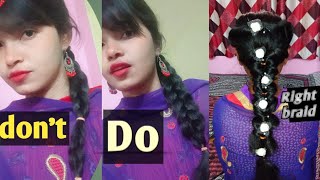The Best Braid Size For Length Retention Without Damage
For the ‘weavelistas’ among you braids are like the poor relation that you don’t visit very often. Even though they are not for everyone, I personally love braids and have use them extensively in my hair journey. They are a very effective protective style, they look great and are ultra easy to care for.
As promised in a recent newsletter, I would like to clarify the best braid sizes for maximum length retention and I would also like to look at braiding technique which is equally important to the health of your locks.
Braid Sizes

Micro braids – They are very popular with braid wearers but they are also the most stressful braid size to your follicles. Some people have found success with micro braids but many have also found themselves with traction alopecia and excessive breakage.
Pen size braids – These are the ideal size in terms of tensile strength while also being small enough to adequately allow each strand to be equally coated with product when you wash or moisturize your hair.
Chunky braids – These are also great for length retention but they will have to be taken down more often to allow for thorough washing and conditioning. They may also be too big for some people to be aesthetically pleasing!
Of course braid sizes vary widely and you may find success with a braid size between a micro and a pen size braid but the take home message here is the larger the braid, the better your length retention in the long run. The reason for this as I see it are twofold; weight and tensile strength.
Weight
This is particularly important if you are using hair extensions*. When you braid a very small section of hair as in micro or mini micro braids and you attach to this section to hair extensions*, you are adding stress to your follicles from the extra weight of the extensions*. A larger section of hair will be able to withstand the weight of hair extensions* better than a small section.
Tensile strength
Imagine if you will how easy it is to snap a single strand of hair as compared to snapping multiple strands joined together. It’s the same concept they use when creating industrial ropes. By combining multiple strands they create stronger ropes. Braids will withstand the rigors of your daily styling routine when they are thicker rather than thinner.
Braiding Technique
By this I don’t mean techniques like lace braiding, tree braids or cornrows but rather the tension applied while braiding.

High Tension – I know someone who has had very little luck with length retention even though she wears her hair in braids or weaves* majority of the time. Her regimen is good but her high tension method of braiding puts her strands in a constant state of stress for the duration of the style. During take down, she notices that along with the expected shed hair, she gets a great deal of breakage as well. Hair does have some natural elasticity but when you keep it under high tension for long periods of time, like a rubber band the elasticity is lost and breakage becomes the obvious the result.
Medium Tension – This is of course the best way to braid hair for both hair health and longevity of the style. You work with the hair’s own elasticity and ensure that the hair is not being stretched excessively while braiding.
Low Tension – This is also a good option but like chunky braids, the style will not have as much longevity as medium tension braids. You will have to redo these often.
If you are not able to change your braiding technique, you are better off paying someone to braid your hair for you and likewise, if your stylist is making some of these braiding mistakes either switch stylists of learn how to braid yourself!




